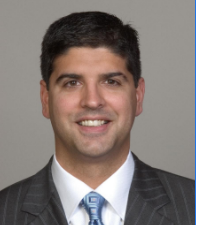
I wanted to bring to your attention an important case that, while it may not directly affect your facility, potentially may show the increased degradation of nursing home rights. It also may signal the increasing specter of greater liability for nursing homes.
On May 2, the U.S. Supreme Court agreed to consider an appeal in Health and Hospital Corp of Marion County, Indiana v. Talevski.
This case involves a 2019 lawsuit brought by Ivanka Talevski of Indiana who claimed that her husband was subjected to harmful psychotropic drugs and was inappropriately transferred to an all-male facility in violation of the Federal Nursing Home Reform Act (FNHRA), a 1987 federal law that establishes a bill of rights for residents of nursing homes receiving Medicare or Medicaid funding.
The complaint argued that because the defendant, Health and Hospital Corp of Marion County, was publicly owned (a county facility), she could sue for damages under Section 1983 of the U.S. Code, which allows individuals to sue government entities that violate their legal rights.
HHC has maintained that Talevski’s treatment was related to his violent behavior toward staff and other residents. The provider moved to dismiss the case, arguing that FNHRA did not allow individuals to sue for violations under federal law. But before the merits of the case are even discussed, the Supreme Court has to determine whether individuals like Talevski have the ability to sue county nursing homes in federal court using Section 1983, which would undeniably increase liability for these homes.
Below is a brief overview of the procedural posture of the case which has far-reaching implications for county nursing homes across the country:
- The primary question presented: whether OBRA ’87 created federal “rights” that are enforceable by SNF/NF residents against government-operated facilities (County Nursing Homes) under 42 U.S.C. 1983.
- A District Court held that the answer is “no,” which conflicts with published opinions issued by the Third and Ninth Circuits.
- Plaintiff-Appellant is supported by three different amicus briefs in the Seventh Circuit, including one by AARP.
- The American Health Care Association’s affiliates in Indiana, Illinois, and Wisconsin jointly filed an amicus brief (filed in October 2020).
- However, in July 2021, a three-judge panel of the 7th Circuit Court of Appeals issued a published opinion (6 F.4th 713) reversing the District Court and agreeing with appellate authority from other circuits finding that OBRA ’87 creates federal “rights” that are enforceable by SNF/NF residents against government-operated facilities under 42 U.S.C. 1983.
- The defendants filed a petition for a writ of certiorari in the Supreme Court that was docketed on December 1, 2021.
- AHCA and the Indiana Health Care Association filed an amicus brief in support of the petition on January 3, 2022; 17 States (led by Indiana) also filed an amicus brief in support of the petition.
- The Supreme Court granted the petition on May 2, 2022.
- The parties will brief the merits over the summer; oral argument likely will be scheduled for a day in late fall 2022; a decision should be issued no later than June 2023.
- Any amicus brief on the merits was due by June 23, 2022.
Ultimately, on May 2, 2022, the U.S. Supreme Court granted the petition to hear the case from Health and Hospital Corp of Marion County, IN, and a nursing home it operates, Valparaiso Care and Rehabilitation (“Valparaiso”).
The U.S. District Judge James Moody in Hammond, IN, initially sided with the nursing homes and found that the federal rules for Medicare and Medicaid recipients stemmed from the government’s spending power, and should be understood as contracts between the government and providers that do not allow for third-party claims like Talevski’s claim.
The 7th U.S. Circuit Court of Appeals reversed the District Court’s decision, however, finding that FNHRA’s language did support such claims. It noted that the Supreme Court had allowed private lawsuits stemming from the government’s spending power before, most recently in a 1990 decision, Wilder v. Virginia Hospital Association, allowing hospitals to sue states over Medicaid reimbursement rates.
HHC and Valparaiso (the nursing home) argued to the Supreme Court that by allowing the lawsuit to go forward, the 7th Circuit had effectively “federalized” malpractice law for public nursing homes, overriding state malpractice laws that often cap damages and attorneys’ fees.
So the issues in this case before the U.S. Supreme Court, while only affecting county nursing homes, could have the potential to increase liability for county nursing homes nationwide.
In addition, while the case only seemingly applies to county nursing homes, the implications for nursing homes generally seem much broader: Why is the law continuing to contemplate increased liability for nursing homes in the current litigious environment? The last thing the industry needs is a federal cause of action to allow residents to gain further federal rights where there were none before.
So you might be reading this and think that this case has no ramifications for non-county nursing homes. In reality, however, it has the potential to further increase liability for nursing homes generally by fostering yet another mode of malpractice litigation in federal courts.
We should all keep an eye on the Talevski case to see where the Supreme Court lands on whether to allow the Talevski side to sue in federal court.
Neville M. Bilimoria is a partner in the Chicago office of the Health Law Practice Group and member of the Post-Acute Care And Senior Services Subgroup at Duane Morris LLP; [email protected].
The opinions expressed in McKnight’s Long-Term Care News guest submissions are the author’s and are not necessarily those of McKnight’s Long-Term Care News or its editors.




